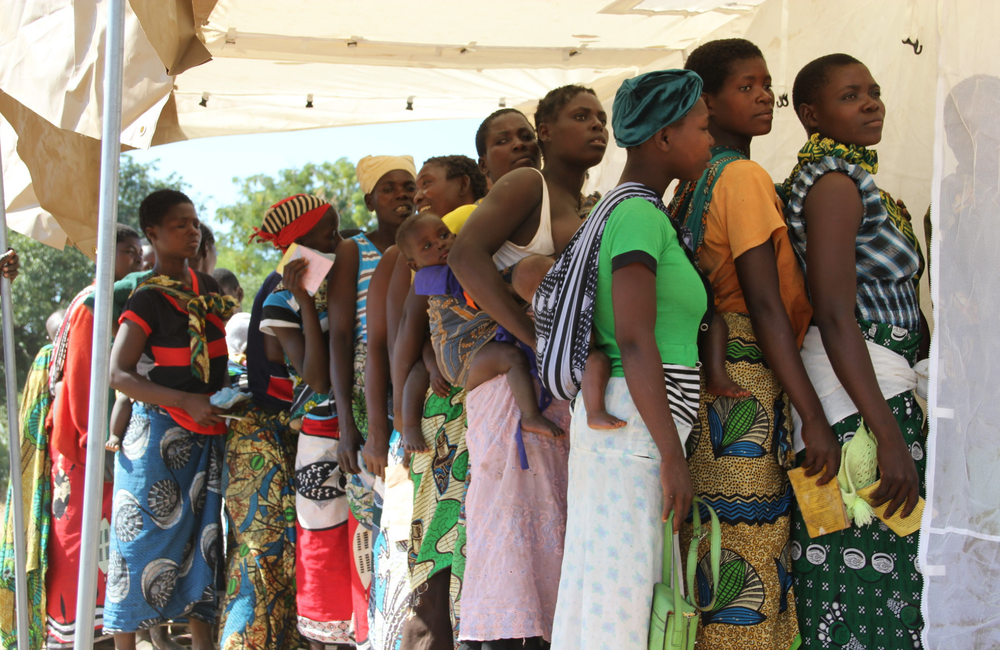
While male sexual partners in the 35 to 44 age band confer the greatest HIV risk for adolescent girls and young women, men aged 25 to 34 years drive the majority of new HIV acquisitions as most young women have partners in this age band, a study from eight African countries has concluded.
The study, published in the journal AIDS, further reveals that each one-year increase in partner age is associated with a 9% greater likelihood of recent HIV acquisition among females between 15 and 24 years.
According to the investigators, the young women in the study who had partners aged 25 to 34 years were three times as likely to acquire HIV, while those with partners aged 35 to 44 had more than a ninefold increase in risk, compared to young women whose partners were in the same age band.
Background
In 2021, women and girls accounted for 63% of all new HIV diagnoses in sub-Saharan Africa, despite representing just 10% of the population. Moreover, adolescent girls and young women aged 15 to 24 years were three times as likely as young men in the same age group to acquire HIV.
Young women in relationships with older male partners are prone to unequal power dynamics. Higher HIV prevalence and detectable HIV in older partners also put these women at a greater risk. A better understanding of their vulnerability could improve preventive interventions.
This study aimed to examine the relationship between male partner age and recent and prevalent HIV infection in young women using population-level data, including measures of male partner infectiousness. They also captured data on cohabiting male partners’ age and HIV status.
The study
Dr Sarah Ayton and colleagues used the Population-Based HIV Impact Assessment surveys conducted between 2015 and 2017 in Eswatini, Lesotho, Malawi, Namibia, Tanzania, Uganda, Zambia, and Zimbabwe. Both females and males took part in these nationally representative surveys.
The questionnaire included questions on lifetime and past-year sexual behaviours and characteristics of the three most recent past-year sexual partners. Blood samples were taken to test for HIV, viral load and CD4 cell count.
A total of 17,813 adolescent girls and young women between 15 and 24 years provided data. Most of their sexual partners (51%) were between 25 and 34 years, followed by 15 and 24 years (41%) and 35 and 44 years (6.4%).
Most of the young women resided in rural areas (65%), were married or cohabitating (58%) and reported only one partner in the past year (90%). Only 20% reported condom use at their last sexual encounter.
Those living with HIV (4.6%) had a median CD4 cell count of 552, 51% were aware of their status, and 48% were virally suppressed. The mean age difference between HIV-positive young women and their partners was seven years.
A total of 63,081 men aged 15 to 59 years also took part in the surveys. The proportion of men with an HIV viral load above 1000 was lowest in those aged 15 to 24, substantially increased in 25 to 34 year olds, peaked in those aged 35 to 44 years and was lower in older age groups.
A total of 19,818 men reported adolescent girls and young women as partners. Of these, 5381 cohabitated with females who also took part in the study.
The men in cohabiting relationships had a mean age of 27.5 years, 29% had two or more past-year sexual partners, and 10% reported condom use at last sex. A total of 287 were living with HIV (prevalence 3.8%) but only 153 were aware of their HIV status and 177 had viral load over 1000.
Results
Among the females, 0.22% (58) recently acquired HIV, for an annualised incidence of 0.45% (95% CI, 0.37–0.54.)
HIV incidence increased with partner age, peaking at 1.6% in women with partners aged 35 to 44 years. The total number of new HIV cases was highest among those with a partner aged 25 to 34 years.
There was an increasing association between recent HIV acquisition and reported partner age-band, with threefold increased risk in women with partners aged 25 to 34 ((adjusted odds ratio (aOR), 3.53; 95% CI, 1.36-9.20), peaking at nine times increased risk among those with partners aged 35 to 44 (aOR, 8.94; 95% CI, 2.63-30.37).
In an additional analysis of the 5381 couples in which both the female and male partners took part in the survey, the results were similar. In addition, the male partner having a high viral load was associated with a 47 times greater odds of the female partner having HIV (aOR, 47.29; 95% CI, 29.24-76.47).
Young women with lower educational attainment, early sexual debut, multiple recent partners, and lower condom use were more likely to have partners aged 35 to 44.
Rural women, those from Tanzania or Uganda, and married or divorced young women had significantly higher odds of partnerships with older men aged 45 to 59.
The authors suggest that "programs promoting education and women's economic empowerment could interrupt this cycle of vulnerability."
Based on these findings, Dr Suzanne Leclerc-Madlala of USAID notes two suggestions for HIV prevention intervention programs in an accompanying editorial.
First, PrEP risk assessments should take account of partner age and local infectiousness data from men. Secondly, testing for men, including index and HIV self-testing, urgently needs to be expanded, to address men's persistent lag in both viral suppression and awareness of their HIV status.
Ayton S et al. Male partner age, viral load, and HIV infection in adolescent girls and young women: evidence from eight sub-Saharan African countries. AIDS 37:113-123, 2023.
DOI: 10.1097/QAD.0000000000003388
Leclerc-Madlala Suzanne. Adolescent girls and young adult women's HIV infection, male partner age, and HIV status: connecting the dots. AIDS 37:197-198, 2023.
DOI: 10.1097/QAD.0000000000003392
Full image credit: What women want. Image by Lindsay Mgbor/Department for International Development. Available at www.flickr.com/photos/dfid/7496331032/under a Creative Commons licence CC BY-NC-ND 2.0.
